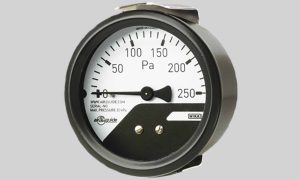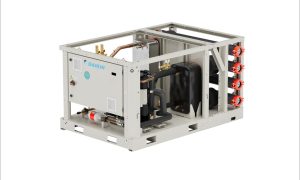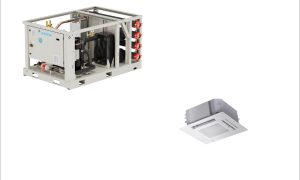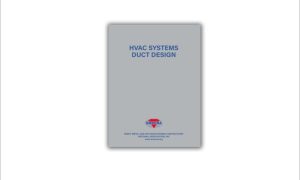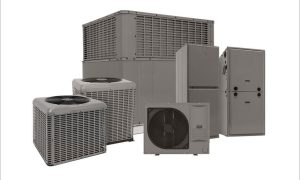AI mechanisms in buildings may sense, monitor, store, analyse, self-adjust comfort parameters, and retrieve data, says Rajesh Adhangale, Business Development Manager – Building Automation, Beckhoff Automation Pvt. Ltd., while interacting with Thermal Control Business Update.
Emerging new opportunities in the built environments in the area of thermal comfort
The buildings in the past were designed to accommodate bulky HVAC equipment like Chillers, AHU and VAV systems. This equipment occupied considerable floor space and was difficult to install & maintain. Also, the entire installation procedure was costly. Over a period, HVAC technology evolved. The vast buildings gave way to modern & slim building structures, so bulky & expensive equipment was replaced by less space-consuming and cost-effective HVAC equipment like Variable Refrigerant Flow units (VRFs). This evolution not only toned down the size of machines but also introduced technology to make these machines more intelligent, communicative & responsive.
AI enhances BMS monitoring in HVAC systems.
Artificial Intelligence (AI) has already entered human life through various means like Siri, Alexa or Self-driving cars and many other self-intelligent applications. AI in Buildings is meant to perform tasks that replace human efforts with machines and achieve occupant comfort, and human and machine safety & bring in energy savings. Some examples of AI in buildings may be monitoring, storing, analysing & self-adjusting comfort parameters like suitable temperature & humidity. Another example of AI in buildings may be adjusting the intensity of lights based on ambience lux intensity or people occupancy. Enabling building ventilation systems by monitoring Indoor Air Quality (IAQ) can be another example of AI.
The presence of BMS enhances HVAC performance
In the past, building automation systems in some isolated rooms and operated by naïve technicians. Its purpose was to monitor comfort parameters and sometimes manually command the HVAC equipment. Over a period, end users have realised the importance of building management systems for monitoring and effective control, data storage, analysis and reporting purposes. Nowadays, control systems are used to store buildings’ humongous data. The present data is then compared with the past, analysed systematically and used efficiently for energy savings, workforce optimisation, analysis of various building parameters, safety and surveillance of premise, avoiding trespassing and tailgating of unauthorised personnel & for suggesting predictive maintenance schedules for machinery and equipment etc. This helps to identify and timely attend to equipment wear & tear, extending the lifespan of machinery. This, in turn, allows end-users and investors to achieve a faster return on investment (ROI). BMS is also being used to keep buildings ventilated and improve air quality. In short, BMS helps facilities to breathe, inhale fresh air from surroundings & vent out harmful gases, thus enhancing the life of building machinery and improving the overall lifestyle & health of building occupants.
Challenges in using BMS for monitoring and maintenance of HVAC
Building Automation technology has had a presence in India for over 25 years; however, it has not matured as expected. The primary reason I think about this is the lack of technology awareness in our society. It is still perceived as a luxury application and not a mandatory requirement like a safety & surveillance system. The perception of various stakeholders needs to be drastically changed from BMS as a comfort application to a cost & energy saving mechanism. It is essential to communicate to end-users how installing Variable Frequency Drive (VFD) to their AHUs and connecting it to BMS can bring about a minimum of 20-30 per cent more energy savings than systems without VFDs. Similarly, controlling building lights through BMS can lead to substantial energy savings at the end of the year. Also, the use of open, modular, scalable & smart technology may help provide standardised solutions benefiting all the stakeholders of buildings, from OEMs, System Installers, Consultants & Architects & most importantly, end-users and Investors.
AI technology is the next transformation in HVAC control in large buildings.
With the advent of AI in buildings, BMS is no longer a system working in an isolated mode but a highly communicable mechanism connecting buildings, premises, cities & even countries over the internet. The systems in various buildings may seamlessly communicate with each other through open, cloud-based protocols & exchange data for the benefit of users and occupants. For, e.g. Buildings may fetch climate information from the city weather station and take corrective action like evacuation announcements via the Public Address system and enabling drainwater pumping system in case of a storm or heavy shower forecast.City street lights may be operated, and lux intensity varies based on lux or occupancy sensors, enabling daylight savings. A district cooling or heating system may be deployed for a cluster of commercial/ residential buildings spread across premises or city limits. The possibilities are endless with the use of AI in Building Automation.
Advantages of implementing AI technology in HVAC systems for building controls
Equipping a Building Control System with ‘AI’ is like providing intelligence. It is a mechanism that can sense, capture data from the field, and store it locally, on the network or in the cloud, retrieve data whenever necessary, compare past data with present data, analyse, compute and take instant corrective action as & when required. There may be many advantages like precise and error-free information flow, fast, responsive action, seamless integration and communication between different sub-systems on an open protocol, and remote monitoring and control of building parameters from any part of the world through mobile devices. Truly a high-class user experience at a very nominal operation cost.
Cookie Consent
We use cookies to personalize your experience. By continuing to visit this website you agree to our Terms & Conditions, Privacy Policy and Cookie Policy.



